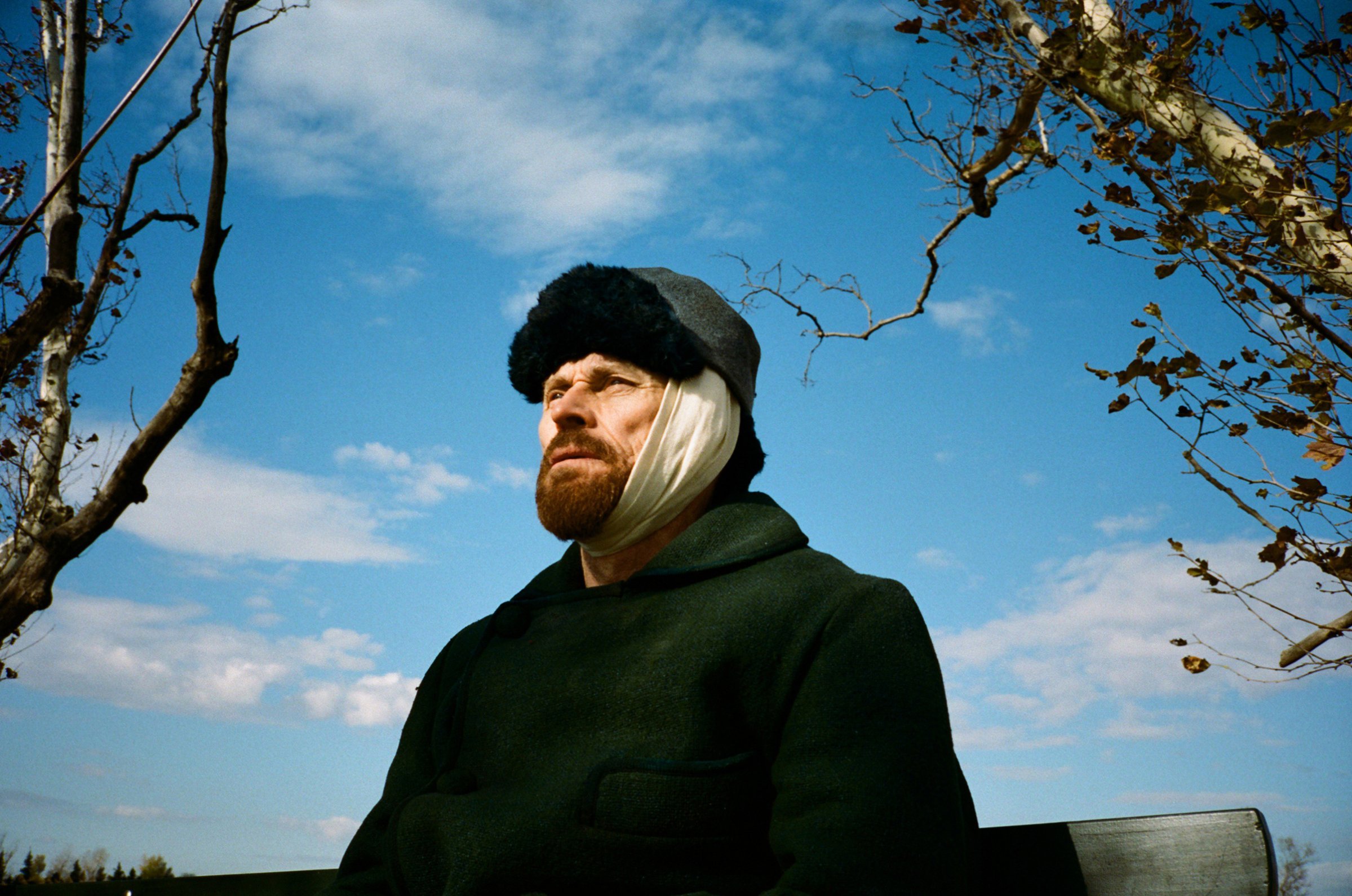
There are things we know for sure about Vincent van Gogh: that he suffered from mental-health issues, that he cut off his left ear in 1888, that in some form or another his paintings–reproduced on coffee mugs, museum-shop scarves and laptop sleeves–bring many people at least moderate joy every day.
At Eternity’s Gate, Julian Schnabel’s delightful, mournful film about van Gogh’s last years, spent in Arles, St.-Rémy and Auvers-sur-Oise, is far from a straight-on biopic. Instead, Schnabel riffs on what we know and speculates about much we don’t, imagining what it was like to see through van Gogh’s eyes and to live in his skin. We see the artist sketching a stand of trees whose leaves look like little spears. But in his drawing, they’re curlicues–wholly inaccurate, according to our eyes, and yet making more visual and emotional sense than the real thing.
Schnabel’s dream portrait of van Gogh is made whole by its star, Willem Dafoe, whose radiant intensity fills every corner of the film. Artists often come off as pretentious, making noisy pronouncements about their art or that of others. The van Gogh of At Eternity’s Gate is fond of making grand little speeches, sometimes to friends–like his close associate Paul Gauguin, played with soulful élan by Oscar Isaac–and sometimes, in voice-over, to himself: “I’d like to find a new light. For paintings that we haven’t yet seen. Bright pictures, painted in sunlight.”
It sounds pretentious until you remember that van Gogh actually did it, and some of Schnabel and cinematographer Benoît Delhomme’s shots, framed as modified re-creations of van Gogh’s pictures, bring that truth home. All those sunflower yellows and twilight blues translate very nicely to our coffee mugs. But Schnabel reminds us that they were, in fact, the very colors of one man’s life.
More Must-Reads from TIME
- Inside Elon Musk’s War on Washington
- Introducing the 2025 Closers
- Colman Domingo Leads With Radical Love
- Why, Exactly, Is Alcohol So Bad for You?
- The Motivational Trick That Makes You Exercise Harder
- 11 New Books to Read in February
- How to Get Better at Doing Things Alone
- Column: Trump’s Trans Military Ban Betrays Our Troops
Contact us at letters@time.com